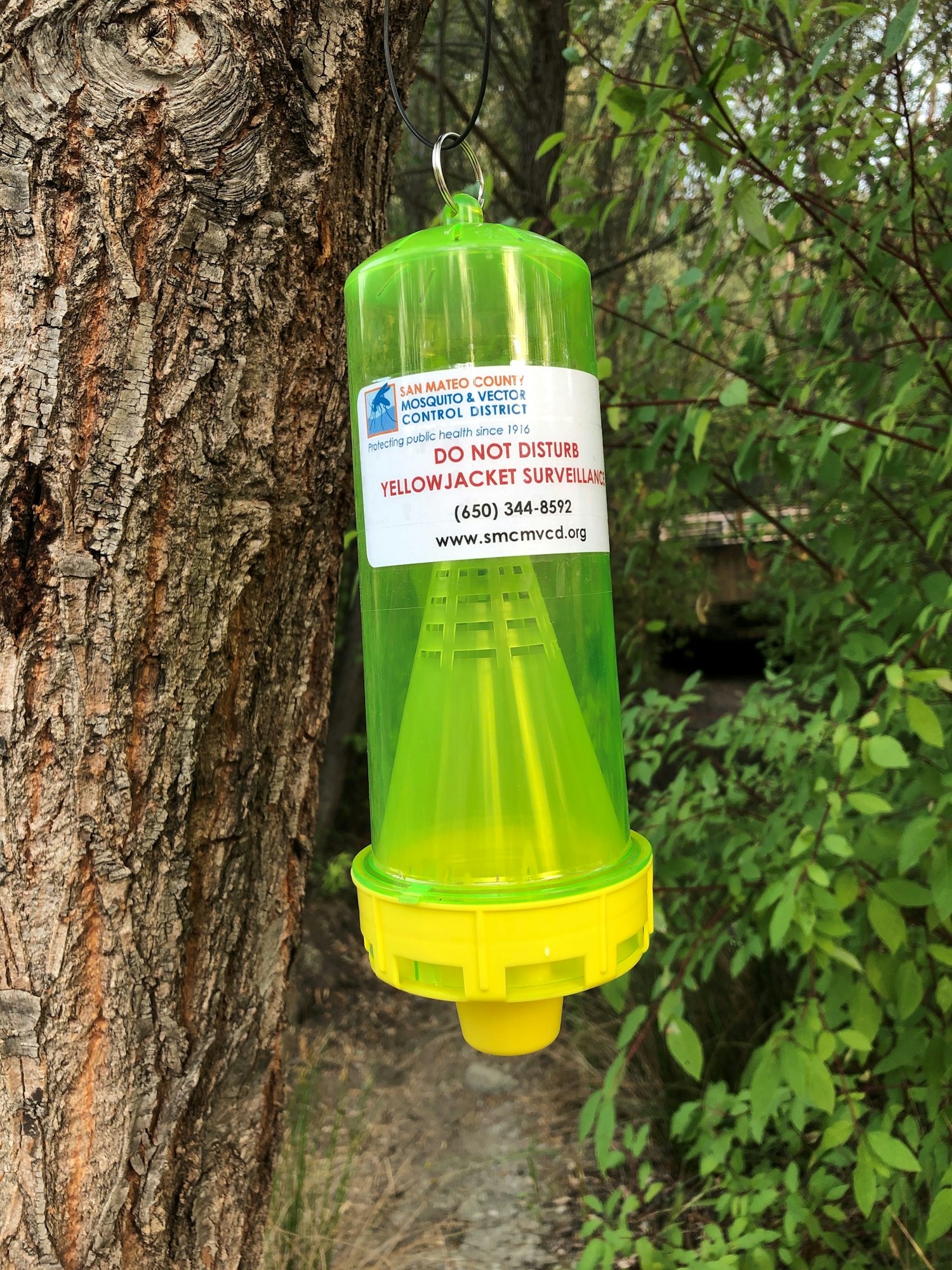Yellowjacket Trapping

Yellowjacket wasps are an extremely abundant pest in San Mateo County and the removal of their nests is the District’s most frequently requested service during the summer. These wasps form large colonies underground or in crevices of structures and can aggressively sting and bite. They are predators of other insects but also eat fruit, flower nectar and tree sap.
While yellowjackets are attracted to the food people eat and can become a great nuisance to outdoor diners or picnickers, the biggest threat from them occurs when people accidentally disturb their nest. Yellowjackets will emerge in large numbers to defend the nest and can cover a person with stings in a matter of seconds.
While the District can assist many residents with yellowjacket nest removal, there are some locations where this is not possible. For example, picnic areas within large parks or yards adjacent to open space are within the flight range of an area too expansive to locate and remove all nests. In these circumstances, residents can use yellowjacket traps and baits to mitigate the problem so they can still enjoy the outdoors during the summer season.

The District is working on a project to determine whether commercially-available lures and baits are effective on yellowjackets in San Mateo County. This year, District staff are evaluating different types of non-toxic traps to discover if one type catches significantly more yellowjackets or other stinging wasps than another. The best trap can then be used as a monitor to assess changes in yellowjacket populations when other tools, such as toxic bait or nest removal, are being used. The District can also use this knowledge to advise residents or recreational organizations on yellowjacket management and control.
